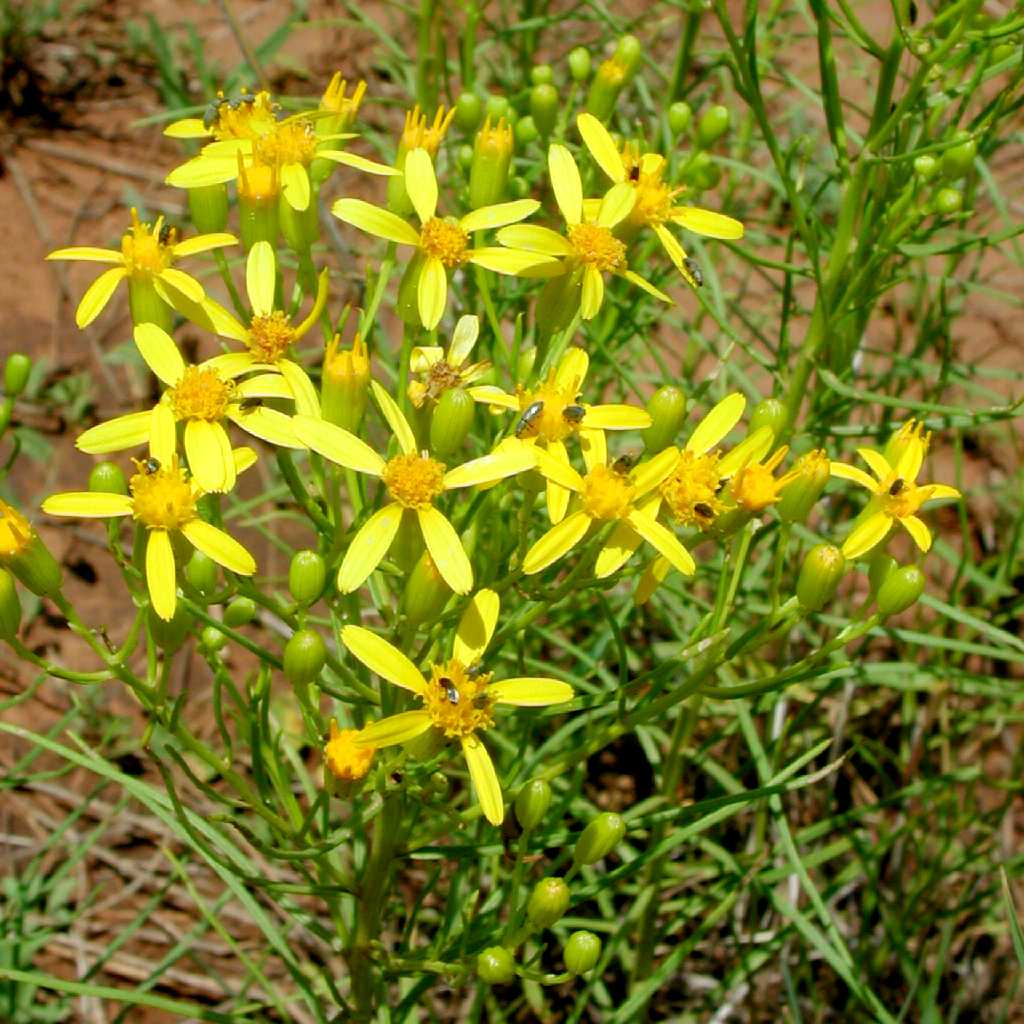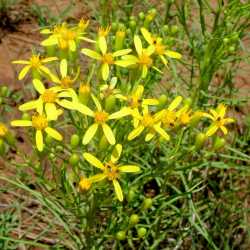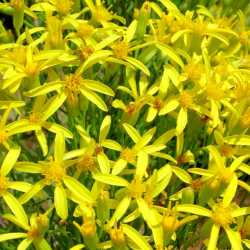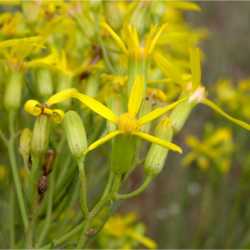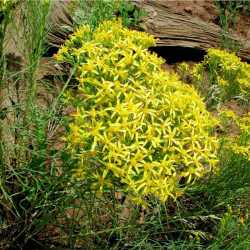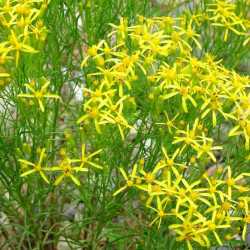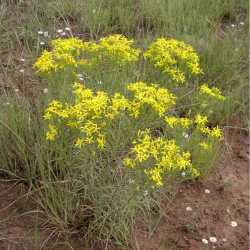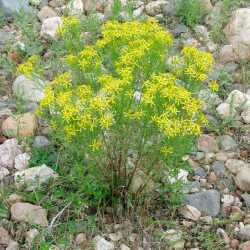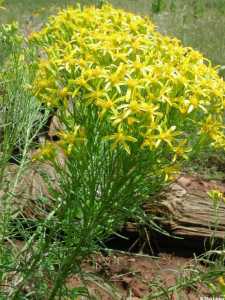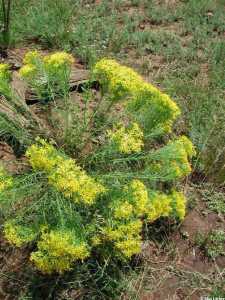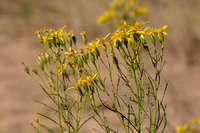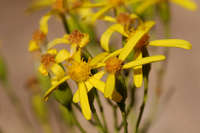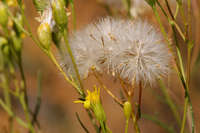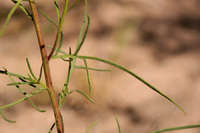Subshrubs, 20-120+ cm (taproots forming woody crowns). Herbage usually glabrous, sometimes sparsely, unevenly hairy. Stems usually multiple (branching and arching upward). Leaves evenly distributed (proximal often smaller); sessile or obscurely petiolate; blades narrowly linear to filiform (or parted into linear-filiform lobes), 5-10 cm × 1-6 mm, bases ± linear, ultimate margins entire. Heads 10-20(-60) in compound corymbiform arrays (involucres cylindric or narrowly campanulate, 3-6 mm diam.). Calyculi 0 or of 1-3+ (minute, inconspicuous) bractlets. Phyllaries usually ± 8, sometimes ± 13, (5-)6-9(-10) mm, tips green or minutely black. Ray florets ± 5 (± 13); corolla laminae 8-12 mm. Cypselae usually hirtellous, sometimes glabrous. 2n = 40.
Flowering summer-fall. Open, dry disturbed sites, especially stream banks and hillsides; 1000-3500 m; Ariz., Calif., Colo., Nebr., Nev., N.Mex., S.Dak., Tex., Utah, Wyo.
Plants with the leaves parted into lobes that are seldom more than 1 mm wide have been recognized as Senecio spartioides var. multicapitatus (or as S. multicapitatus); expression of the character is inconsistent throughout the range and recognition of the two entities is all but impossible to maintain.
Senecio spartioides apparently hybridizes with S. eremophilus in Garfield County, Utah, and perhaps elsewhere (cf., Holmgren, Reveal, and LaFrance 3463 , BRY, KSC, NY). The name Senecio toiyabensis rests upon materials that suggest introgression with S. fremontii. Some specimens usually referred to 41. S. pattersonensis suggest introgression with S. spartioides.
Duration: Perennial
Nativity: Native
Lifeform: Subshrub
General: Subshrubs, 20-120 cm tall, from taproots forming woody crowns; stems tufted, freely branching and arching upward, commonly dying back to the ground each winter.
Leaves: Alternate, sessile or obscurely petiolate, and evenly distributed along stems; blades narrowly linear to filiform or sometimes divided into linear-filiform lobes, 5-10 cm long by 1-6 mm wide, glabrous or sparsely hairy.
Flowers: Flower heads yellow, showy and radiate, in compound flat-topped panicles of 10-20 heads; involucres cylindric or narrowly campanulate, 3-6 mm in diameter; the bracts (phyllaries) 8-13 in a single series, 6-9 mm long, the tips green or minutely black; sometimes calyculi of 1-3 minute bractlets present below the involucre; ray florets 5 per flower head, the laminae (ray petals) 8-12 mm long, yellow; disc florets yellow.
Fruits: Achenes usually hirtellous, sometimes glabrous; topped with a pappus of capillary bristles.
Ecology: Found on open sites, often dry and disturbed, especially along stream banks and on hillsides from 3,500-11,000 ft (1067-3353 m); flowers June-October.
Distribution: CA to SD, south to AZ, NM, and TX.
Notes: S. spartioides is a fairly common subshrubby Senecio in the western US. It resembles S. flaccidus, but is usually mostly glabrous, never wooly-tomentose as S. flaccidus can be. Also, S. spartioides lacks calyculi (the set of a few bractlets subtending the flower head) or it can sometime have 1-3 minute, inconspicuous calyculi which are 1/4 the length of the phyllaries or shorter (if S. flaccidus has calyculi, they are much longer, at least half the length of the phyllaries). S. spartioides material with the leaves parted into lobes less than 1 mm wide has been recognized as var. multicapitatus, but it is an inconsistent character and intermediates abound throught the species' range; therefore FNA does not recoginze any varieties for this species.
Ethnobotany: An infusion of leaves was used as a tonic after childbirth.
Etymology: Senecio is from the Latin word senex, old man, which refers to the gray hairs on the seeds; spartioides means like the Spartium, the genus of "spanish broom" in Fabaceae.
Synonyms: Senecio multicapitatus
Editor: SBuckley 2010, AHazelton 2017


